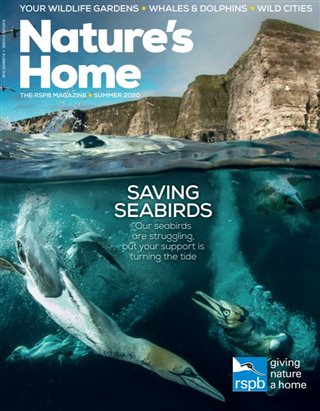
The summer issue of Nature’s Home will be with all our members soon. We hope you can use it to enjoy a bit of escapism into the wonderful world of seabirds, tiny insects, and whales and dolphins... by Head of Supporter Communications, Sara Downes.
We had to print the magazine just as coronavirus was reaching the UK, so some things have changed since then. We didn’t know what social isolation would look like for…